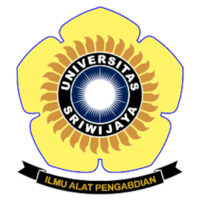Komparasi Produksi Cabai Merah (Capsicum annum L.) Sistem Terapung dan Non-Terapung pada Berbagai Dosis Pupuk Kompos Sapi
Abstract
Hidayatulah R, Apriliani S, Susilawati S, Ammar M. 2022. Comparison of production of red chili (Capsicum annum L.) floating and non-floating systems at various doses of cow compost fertilizer. In: Herlinda S et al. (Eds.), Prosiding Seminar Nasional Lahan Suboptimal ke-10 Tahun 2022, Palembang 27 Oktober 2022. pp. 712-721. Palembang: Penerbit & Percetakan Universitas Sriwijaya (UNSRI).
Cow dung waste generated in livestock activities has not been utilized optimally. Manure produced from farms is continuous as long as the farm operates. This will be a problem because it will pollute the surrounding environment. To overcome this problem, the potential of cow dung waste can be used as compost for horticultural crops such as red chili (Capsicum annum L). This study aimed to compare the growth and production of red chili (Capsicum annum L. var. Gada F1) with floating and non-floating systems at various doses of cow compost. The study started with the cultivation of red chili varieties of Gada F1 by applying compost at various doses with a Randomized Block Design (RAK) with 3 replications. The dose of cow dung compost used is 300 g/5 kg of soil; 600 g/5 kg of soil; 900 g/5 kg soil; and 0 g/5 kg of soil as control. Data were obtained from the calculation of plant growth and production which included height, number of leaves, diameter of the crown, number of flowers, number of fruits, fruit length, fruit diameter, and fruit weight per plant and analyzed using ANOVA. If there is a significant difference, then it can be continued with the BNT test (Least Significant Difference). For the results of production observations which include fruit fresh weight, fruit length, and fruit diameter, an unpaired independent sample t-test was used. This t-test is used to compare the difference between the two means (means) of two independent samples with the assumption that the data are normally distributed.. With a non-floating system and application of cow compost at a dose of 900 g/5 kg of soil, it can provide the most optimal results for the production of red chili plants of the Gada F1 variety.
Keywords
Full Text:
PDFArticle Metrics
Abstract view : 311 timesPDF - 447 times
Refbacks
- There are currently no refbacks.

